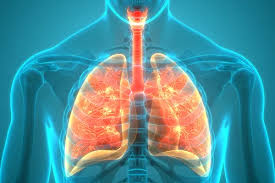NOW ITS WALKING PNEUMONIA IN CHINA
Barely two years after the last great outbreak of COVID-19, China is once again in the news as reports of a respiratory illness that seems to be pneumonia are emerging from the country.
What is causing illness/pneumonia in China?
China is headed towards its usual flu season and this is the first winter after lockdown restrictions were lifted in the country. So children and people are bound to fall sick.
But there is no explanation yet as to why there is a sudden spike in pneumonia cases.
The National Health Commission of China has attributed the pneumonia cases to a wide variety of pathogens, including influenza strains, SARS-CoV-2, RSV and mycoplasma pneumonia-causing bacteria.
Symptoms of the walking pneumonia:
The symptoms of walking pneumonia, which is affecting children in China, are-
- Moderate fever
- Sore throat
- Difficulty in breathing
- Inflammation of the lungs but not much coughing
- Runny nose
- Chills may or may not accompany fever
- Diarrhoea
- Headache
- Sneezing
- Chest pain
The symptoms vary from individual to individual.
How does walking pneumonia spread?
Pneumonia and any respiratory disease spread through respiratory droplets that contain the virus or bacteria responsible for the disease. Droplets are discharged into the air when an infected person coughs or sneezes and can enter the respiratory system of anyone nearby.
It also spreads through contact when healthy people touch something that was earlier touched by an infected person who had sneezed or coughed into their hands. If this hand touches the nose or mouth or if the person eats something without washing the hands, the healthy person will get infected.
The precautions we can take
- Doctors have always advised vulnerable groups to opt for influenza vaccines yearly.
- People aged 65 and above could also consider getting a pneumonia shot. Please consult your doctor first.
- COVID hygiene measures such as hand sanitisation, hand washing, sneezing into handkerchiefs should always be observed.
- Wearing masks is also a good idea, at least during the flu season.
Should India stay alert?
State governments have been asked to keep their hospitals and nursing in a state of preparedness to tackle any number of patients showing signs of respiratory distress. They have been asked to keep beds, oxygen cylinders, oxygen plants, ventilators, and protective gear ready.
ILI and SARI surveillance in India
Respiratory diseases, including pan-India influenza-like illness (ILI) and Severe acute respiratory infection (SARI), are surveyed in India. The trends are observed and entered into a database so that correct policies can be introduced to tackle any possible outbreak and try to reduce the case burden of respiratory diseases in India. In light of the pneumonia cases in China, the central government has requested that state governments stay updated on the latest ILI and SARI data and send swabs of people infected with ILI and SARI to Virus Research and Diagnostic Laboratories. This way, any new threat can immediately be identified.
Ayurvedic Remedies to Prevent Pneumonia
Antibacterial herbs and medicines aim at preventing pathogens from harming the body. Ayurvedic herbs like kutaja, Indian gooseberry, bhringraj, sesame, heart-leaved moonseed, and malabar nut can protect the body from pneumonia. Keeping this in mind, here are the top ayurvedic herbs that can treat pneumonia.
Fenugreek
Ayurveda for pneumonia considers fenugreek to be an excellent remedy. Studies have found fenugreek leaves full of antibiotics which makes a perfect case here. Prepare a cup of fenugreek tea by adding fenugreek and honey, and you will have a beverage full of anti-pneumonia powers.
Basil
Basil (a.k.a tulsi) is known for its antibacterial properties. Studies have revealed that Basil polysaccharide, an ingredient present in basil can improve the chances of survival from pneumonia. It does so by developing the body’s resistance to the disease. Because of this, basil can make an excellent ingredient to fight inflammation and congestion. It also prevents the bacteria from mixing in the blood.

